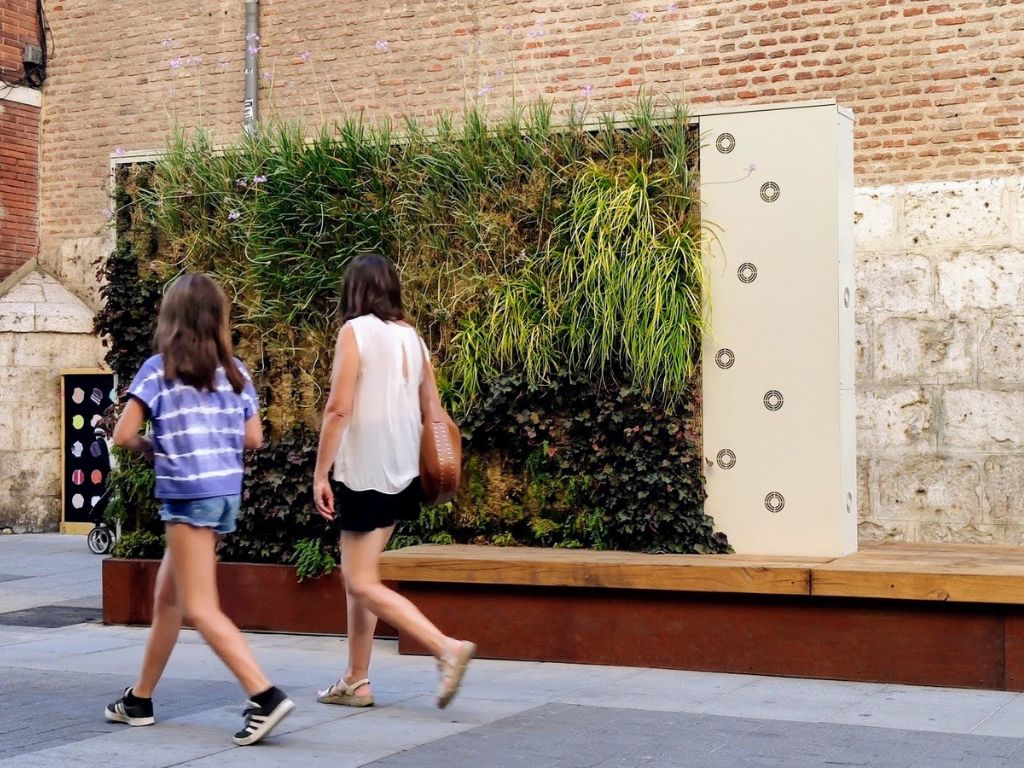The cities of the future face environmental and social challenges that require transformation towards more sustainable environments.
Urban renaturation integrates nature into urban development, improves the quality of life of citizens and contributes to mitigating the environmental impact of cities, but let’s take it one step at a time:
Environmental and social challenges in the cities of the future
The cities of the future face crucial environmental and social challenges that require urgent attention to ensure sustainable and healthy development for their inhabitants.
Emissions generation and unsustainable resource consumption
- Human activity in cities leads to a high production of pollutant emissions that contribute to climate change and poor air quality.
- The disproportionate consumption of natural resources in urban environments intensifies the pressure on urban
- intensifies pressure on the environment and depletes available resources.
- These unsustainable consumption and emission patterns must be urgently addressed to ensure the long-term viability of cities.
Environmental degradation and pollution in cities
Urban sprawl and activity generate environmental degradation, loss of biodiversity and increased pollution in various forms, putting at risk the ecological balance and the quality of life of inhabitants.
- Overexploitation of resources and uncontrolled expansion of cities negatively impact local ecosystems and their regenerative capacity.
- Air, water and soil pollution in urban environments pose a threat to the health of the population and the proper functioning of natural ecosystems.
- Environmental degradation in cities affects the quality of life of their inhabitants and compromises the long-term sustainability of urban environments.
Urban renaturation as a sustainable solution
Urban renaturation is presented as a key solution to improve the sustainability of future cities by integrating nature into urban development in a balanced and harmonious way.
Integrating nature into urban development
- Planting trees and creating green spaces
- Restoration of rivers and promotion of biodiversity
- Incorporation of natural spaces into the urban fabric
- Incorporating nature-based solutions to address challenges or complex areas
Benefits of urban renaturation
- Reduction of air and water pollution
- Mitigating the effects of climate change
- Creating healthy and liveable environments for citizens
- Improved quality of life through integrated natural areas
Policy measures promoted in the European and national context
In the European context, measures have been taken to promote urban greening in cities across the region. This initiative seeks to integrate nature into urban environments, promoting biodiversity and creating healthy spaces for their inhabitants.
Urban greening schemes in European cities
- Urban greening schemes in European cities are designed to improve the quality of life of citizens, reduce pollution and promote environmental sustainability.
- These measures include the creation of green areas, tree planting and river restoration, with the aim of mitigating the environmental impact of urban areas and fostering social cohesion.
National Green Infrastructure Strategy in Spain
- In Spain, the National Green Infrastructure Strategy has been launched , the main objective of which is to promote urban renaturation throughout the national territory.
- This strategy envisages the creation of green spaces in urban environments, the restoration of degraded ecosystems and the promotion of biodiversity, with the aim of improving the quality of life of citizens and guaranteeing a sustainable future for Spanish cities.
Positive impact of integrating nature into cities
Integrating nature into the urban environment not only beautifies cities, but also has a positive impact on the quality of life of their inhabitants. The benefits of integrating nature into cities are detailed below:
Reduced pollution and improved quality of life.
- The presence of green spaces in cities contributes to air purification by absorbing carbon dioxide and emitting oxygen, which helps to reduce air pollution and improve the quality of the air we breathe.
- Natural spaces in cities act as natural filters, trapping pollutant particles and thus reducing the presence of harmful agents in the urban environment.
- In addition, vegetation in cities can lower the ambient temperature through shading and evaporation, thus counteracting the urban heat island effect and creating cooler and more pleasant environments for city dwellers.
Contributing to the physical and mental health of inhabitants
- Having green spaces in cities promotes citizens’ physical activity, encouraging healthier lifestyles and combating sedentary lifestyles, which has direct benefits on people’s cardiovascular and muscular health.
- Connecting with nature in urban environments has been shown to reduce stress, anxiety and depression, contributing to improving people’s mental health and promoting emotional and psychological well-being.
- In addition, the presence of natural areas in cities favours social interaction, creating meeting and recreational spaces that strengthen the community fabric and promote integration and a sense of belonging among inhabitants.
Strategies for effective renaturalisation in urban planning
Urban renaturation requires specific strategies in urban planning to achieve an effective integration of nature into the built environment. These strategies range from citizen participation in the design of green spaces to collaboration between different actors to promote sustainable urban development.
Citizen participation in the design of green spaces
- Encourage the active participation of citizens in the planning and design of green spaces.
- Organise public consultations and participatory workshops to gather ideas and needs of the community.
- Promote the co-creation of green spaces that are appropriate and relevant to the inhabitants.
Stakeholder collaboration for sustainable urban development
- Establish partnerships between public and private entities and civil organisations to work together for urban renaturation.
- Implement coordinated policies and strategies that favour the integration of nature into urban planning.
- Develop training and capacity building programmes for the different actors involved in sustainable urban development.
Urban renaturation as a necessary alternative in a context of accelerated urban growth.
Urban renaturation emerges as a response to the accelerated expansion of cities, offering a crucial alternative to ensure their long-term sustainability. By integrating nature into the urban fabric, it establishes a necessary balance to face current and future challenges.
Ensuring a sustainable and resilient future
- Urban renaturation is not only a desirable option, but a necessary one to ensure a sustainable future in the face of continued growth of urban areas.
- By encouraging the presence of natural spaces in urban environments, a resilient fabric is created that can adapt to environmental and climatic changes.
- Integrating green spaces and natural systems into cities helps to reduce vulnerability to extreme events and promotes long-term sustainability.
Improving quality of life and creating healthy cities
- The presence of green areas and natural elements in urban settings not only benefits the environment, but also has a direct impact on the quality of life of the inhabitants.
- Urban renaturation allows access to natural spaces for recreation, leisure and contact with biodiversity, which contributes positively to the emotional and physical well-being of the population.
- The creation of healthy environments in cities, through the integration of nature, translates into an improvement in the health of citizens, reducing stress, encouraging physical activity and promoting emotional balance.

The importance of rethinking the organisation of cities for sustainable living
In a context where cities face environmental and social challenges, it is essential to rethink their organisation to ensure a sustainable future. Urban planning must consider the integration of nature into the urban fabric as a priority, in order to mitigate environmental impact and improve the quality of life of inhabitants.
- Urban sustainability requires a holistic approach encompassing resource conservation, emission reduction and the promotion of green spaces. Rethinking the organisation of cities involves taking concrete measures to promote biodiversity, reduce pollution and adapt to climate change.
- In addition, it is necessary to promote sustainable mobility, design resilient infrastructures and encourage citizen participation in urban decision-making. Only by changing the way we think about our cities can we ensure a liveable environment for future generations.
Integrating nature into the urban fabric as a key to tackling climate change and environmental degradation
Integrating nature into cities plays a key role in the fight against climate change and environmental degradation. By incorporating green spaces, trees and natural areas into the urban environment, it contributes to mitigating the negative effects of phenomena such as global warming and air pollution.
- Urban parks act as carbon dioxide sinks, helping to reduce greenhouse gas emissions and maintain an environmental balance in cities.
- Vegetation in streets and squares helps to purify the air, filtering pollutants and improving the quality of the air we breathe. This action is crucial for the health of urban dwellers, reducing the risks of respiratory diseases.
- In addition, the presence of green areas in cities helps to regulate temperature, creating cooler and more pleasant spaces in the built environment. This climate mitigation effect is essential to counteract the phenomenon of rising temperatures associated with climate change.

Strategies to promote biodiversity and the restoration of urban environments
- Encourage the planting of native species in urban spaces to promote local biodiversity and restore natural habitats.
- Create green corridors connecting natural and urban areas, facilitating wildlife mobility and promoting biodiversity.
- Implement sustainable watermanagement programmes in urban environments, favouring the creation of artificial wetlands that act as natural filters and refuges for aquatic species.
- Promote the creation of vertical gardens and green roofs on buildings to increase vegetation cover in cities and provide habitats for birds and insects.
- Establish river corridors and renaturate urban rivers, returning them to their natural course and improving water quality, which benefits aquatic flora and fauna.
Environmental and social benefits of urban renaturation in the development of more liveable and healthy cities.
- Reduction of air and water pollution, improving the environmental quality of cities.
- Mitigation of climate change, contributing to the fight against this global challenge.
- Creation of green public spaces that promote social cohesion and community well-being.
- Improving the physical and mental health of inhabitants, thanks to the presence of green and natural areas in the urban environment.
- Promotion of biodiversity, favouring the presence of native flora and fauna in cities.






